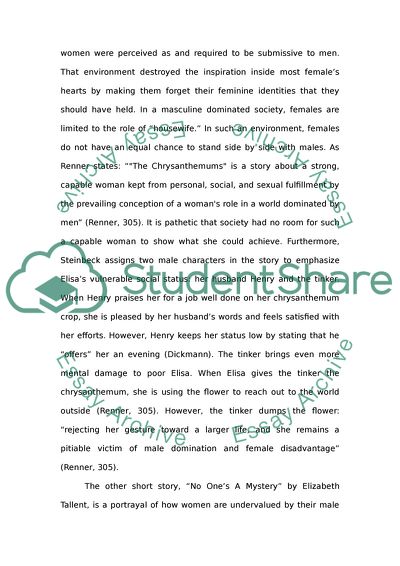Cite this document
(“Argumentative essay about feminine status in The Chrysanthemums and No”, n.d.)
Argumentative essay about feminine status in The Chrysanthemums and No. Retrieved from https://studentshare.org/literature/1624729-argumentative-essay-about-feminine-status-in-the-chrysanthemums-and-no-ones-a-mystery
Argumentative essay about feminine status in The Chrysanthemums and No. Retrieved from https://studentshare.org/literature/1624729-argumentative-essay-about-feminine-status-in-the-chrysanthemums-and-no-ones-a-mystery
(Argumentative Essay about Feminine Status in The Chrysanthemums and No)
Argumentative Essay about Feminine Status in The Chrysanthemums and No. https://studentshare.org/literature/1624729-argumentative-essay-about-feminine-status-in-the-chrysanthemums-and-no-ones-a-mystery.
Argumentative Essay about Feminine Status in The Chrysanthemums and No. https://studentshare.org/literature/1624729-argumentative-essay-about-feminine-status-in-the-chrysanthemums-and-no-ones-a-mystery.
“Argumentative Essay about Feminine Status in The Chrysanthemums and No”, n.d. https://studentshare.org/literature/1624729-argumentative-essay-about-feminine-status-in-the-chrysanthemums-and-no-ones-a-mystery.


